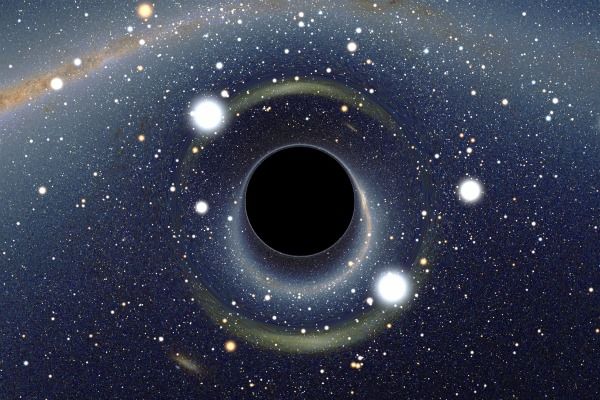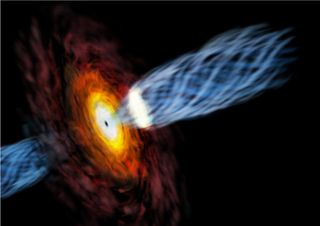New Telescope to Take First-Ever Black Hole Photo

A group of astronomers are meeting this week to plan out an ambitious and unprecedented project — capturing the first-ever image of a black hole.
The researchers want to create an Earth-size virtual instrument called the Event Horizon Telescope, a worldwide network of radio telescopes powerful enough to snap a picture of the supermassive black hole at the heart of our Milky Way galaxy.
"Nobody has ever taken a picture of a black hole," Dimitrios Psaltis, of the University of Arizona's Steward Observatory, said in a statement. Psaltis is a co-organizer of the conference, which began today (Jan. 18) in Tucson, Ariz. "We are going to do just that."
An elusive target
Black holes are exotic structures whose gravitational fields are so powerful that they trap everything, even light. They were first postulated by Albert Einstein's theory of general relativity.
Astronomers have detected plenty of black holes in our galaxy and beyond via indirect means. It's thought that most, if not all, galaxies harbor a supermassive black hole at their cores. [Gallery: Black Holes of the Universe]
However, scientists have yet to image a black hole. Researchers working on the Event Horizon Telescope — named after a black hole's "point of no return," beyond which nothing can escape — hope to change that.
Sign up for the Live Science daily newsletter now
Get the world’s most fascinating discoveries delivered straight to your inbox.
"Even five years ago, such a proposal would not have seemed credible," said Sheperd Doeleman of MIT, the project's principal investigator. "Now we have the technological means to take a stab at it."
Doeleman and his team want to create a network of up to 50 radio telescopes around the world, which will work in concert to get the job done.
"In essence, we are making a virtual telescope with a mirror that is as big as the Earth," Doeleman said. "Each radio telescope we use can be thought of as a small silvered portion of a large mirror. With enough such silvered spots, one can start to make an image."

Imaging a black hole's 'shadow'
The team plans to point the Event Horizon Telescope at the supermassive black hole at the Milky Way's center, which is about 26,000 light-years away and is thought to hold as much mass as 4 million suns.
That's pretty big, but picking the object out at such a great distance is equivalent to spotting a grapefruit on the surface of the moon, researchers said.
"To see something that small and that far away, you need a very big telescope, and the biggest telescope you can make on Earth is to turn the whole planet into a telescope," said Dan Marrone of the Steward Observatory.
Researchers hope to get a picture of the black hole's outline, or "shadow."
"As dust and gas swirls around the black hole before it is drawn inside, a kind of cosmic traffic jam ensues," Doeleman said. "Swirling around the black hole like water circling the drain in a bathtub, the matter compresses and the resulting friction turns it into plasma heated to a billion degrees or more, causing it to 'glow' — and radiate energy that we can detect here on Earth."
General relativity predicts that the black hole’s shadow should be a perfect circle. So the Event Horizon Telescope's observations could provide a test of Einstein's venerable theory, researchers said.
"If we find the black hole’s shadow to be oblate instead of circular, it means Einstein’s theory of general relativity must be flawed," Psaltis said. "But even if we find no deviation from general relativity, all these processes will help us understand the fundamental aspects of the theory much better."
The team hopes to keep adding more instruments to the telescope over time, providing a sharper image of our galaxy's central black hole as the months and years go by.
Each telescope in the network will record its observations onto hard drives, which will be physically shipped to a central processing center at MIT’s Haystack Observatory, researchers said.
Radio rather than optical telescopes are the right tool for the job, they added, since radio waves can penetrate the murk of stars, dust and gas between Earth and the galactic center.
This article was provided by SPACE.com, a sister site to LiveScience. Follow SPACE.com for the latest in space science and exploration news on Twitter @Spacedotcom and on Facebook.














